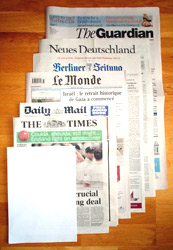It’s been a long held view that ecommerce dollars were mainly driven by price-conscious shoppers leveraging the Internet’s scale and resource to save a buck. Luxury buyers and pure convenience-driven shoppers were still sourcing bricks and mortar for the bulk of their shopping. Not so anymore.
“What’s spearheading online retail sales growth is a tale of two shoppers that visit the web for very different reasons,” said Sucharita Mulpuru, Forrester Research principal analyst and lead author of the report. “The casual shopper goes online to look for the best price, leveraging the transparency of the Internet to save money. However, more affluent customers appreciate the convenience of shopping online and are not necessarily looking for the best deal. Retailers would be wise to recognize there are significant opportunities within both audiences and should market to them accordingly.”
There has been concern that a sluggish economy would take the bite out of online retail sales growth. Current data indicates online retail sales will grow 17% this year – not bad for a down year. Perhaps the real story here is simply about ‘growth’. The Internet continues to be a primary growth medium for many an industry. For many offline retailers large and small the web is the ‘only’ growth medium.For example, a large retailer like Gap had zero offline sales growth from 2006-07, yet online sales grew 24%. The contrast is even more stark for U.S. big-box retailer Circuit City. Their 1400 stores are currently experiencing a 5-10% decline in sales, while their online sales growth this year will be 40%.
Circuit City is experiencing a “massive shift,” in CEO Philip Schoonover’s words, from the store to the web.
via internet retailervia crm today

 In a state of constant flux, the newspaper industry continues to adapt and make proactive changes in an effort to cut costs and entice a new generation of readers. The
In a state of constant flux, the newspaper industry continues to adapt and make proactive changes in an effort to cut costs and entice a new generation of readers. The